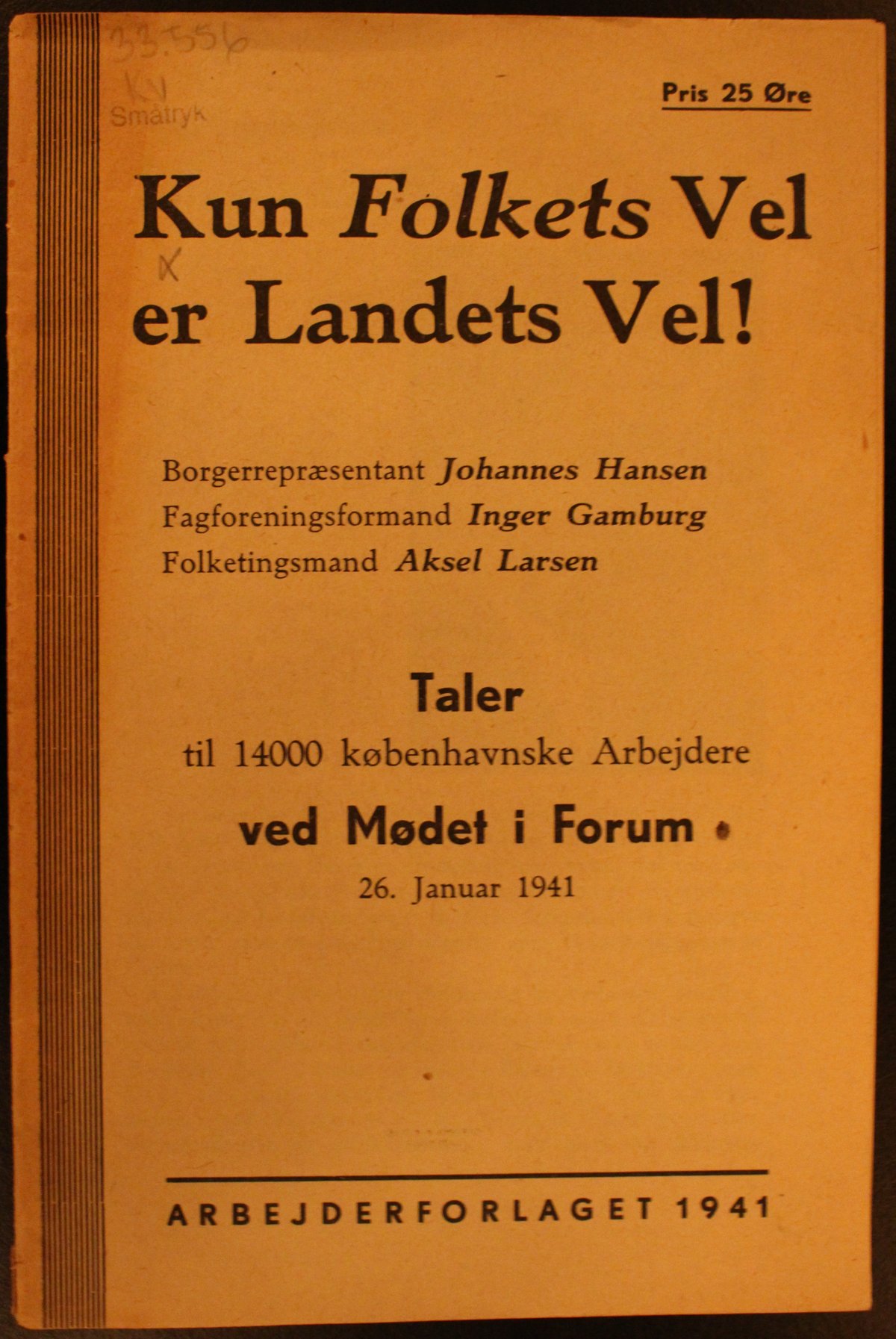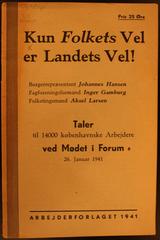
Workers Museum Copenhagen: Visiting Hours, Tickets, and Guide to Historical Sites
Date: 14/06/2025
Introduction
Located in the heart of Copenhagen, the Workers Museum (Arbejdermuseet) is Denmark’s premier institution dedicated to the history, culture, and everyday life of the working class. Housed in the historic Workers’ Assembly Hall—the oldest in Europe—the museum offers a unique blend of immersive exhibits, reconstructed environments, and interactive experiences that chronicle over 150 years of social change, labor movements, and the evolution of Danish society. This guide provides detailed information on the museum’s history, visiting hours, ticket options, exhibitions, accessibility, and key visitor tips to ensure an enriching and memorable experience.
Table of Contents
- The Museum’s Origins and Foundation
- The Historic Workers’ Assembly Hall
- Museum Evolution and Collections
- Permanent and Temporary Exhibitions
- Planning Your Visit: Hours, Tickets, and Location
- Accessibility and Visitor Amenities
- Visitor Experience: Dining, Shop, and Interactive Activities
- Nearby Attractions and Travel Tips
- International Collaboration and Recognition
- Frequently Asked Questions (FAQ)
- Summary and Call to Action
- References
The Museum’s Origins and Foundation
The Workers Museum was established in the early 1980s by a coalition of local residents, trade union educators, and museum professionals who sought to document and celebrate the lived experiences of Denmark’s working class. The museum officially opened its doors in 1982 in the Workers’ Assembly Hall at Rømersgade, Copenhagen. Its governing board comprised representatives from major cultural and labor institutions, ensuring both authenticity and scholarly rigor in its approach (WorkLab).
The Historic Workers’ Assembly Hall
The museum’s setting is the Workers’ Assembly Hall, which opened in 1879 and stands as Europe’s oldest surviving workers’ assembly hall (Everybody Hates a Tourist). This building, recognized as a scheduled monument in 1983, has long served as a site for trade union gatherings, political meetings, and community events. The Banquet Hall, adorned with union flags and trade carvings, is a centerpiece, reflecting the spirit of solidarity and collective action that shaped Denmark’s labor movement.
Museum Evolution and Collections
Since its inauguration, the Workers Museum has evolved from a local endeavor into a nationally and internationally renowned institution, welcoming upwards of 120,000 visitors annually—including a notable proportion of international guests. A significant milestone occurred in 2004 when the museum merged with the Archive and Library of the Labour Movement, creating a comprehensive foundation that combines extensive archival materials with engaging public exhibitions (WorkLab).
Permanent and Temporary Exhibitions
Permanent Exhibitions
The museum’s permanent exhibitions offer a chronological journey through Danish working-class life. Notable highlights include:
- The Sørensen Family Apartments: Authentic reconstructions of working-class homes from the 1880s and 1915, illustrating changing living conditions.
- Industry and Labor Movement Displays: Artifacts, tools, and multimedia installations showcasing the evolution of trades, labor politics, and workplace discipline.
- The Banquet Hall: Featuring original union flags, trade carvings, and documents related to the Assembly Hall’s construction and history.
Children’s Museum
A dedicated children’s area presents hands-on activities and interactive exhibits, making history accessible and engaging for young visitors.
Temporary Exhibitions
Rotating exhibitions address contemporary social issues, activism, and political art. The museum’s close collaboration with the Workers’ Art Association has contributed a significant art collection, including over 600 oil paintings and 3,000 prints, predominantly by Danish and Nordic artists (WorkLab).
Planning Your Visit: Hours, Tickets, and Location
Visiting Hours
- Standard Hours: Tuesday–Sunday, 10:00 AM–5:00 PM
- Extended Hours: Thursdays open until 8:00 PM
- Closed: Mondays, and December 24, 25, 26, 31, and January 1
- Please refer to the official website for up-to-date hours.
Ticket Prices (as of June 2025)
- Adults: 130 DKK
- Students/18–25: 105 DKK
- Children under 18: Free
- Group Discount: 20% off for groups of 10+ (advance booking required)
- Online Booking: 10% discount when purchased online
- Free Entry: For certain union members (with valid documentation), plus one guest and children under 18
- Parkmuseerne Ticket: Access to six museums for 345 DKK (valid for one year)
Location and Getting There
- Address: Rømersgade 22, 1362 Copenhagen K
- Nearest Metro: Nørreport Station
- By Bike: Rentals available at Rosenborg Cykler; bike parking onsite
- By Public Transport: Close to major bus routes and S-train lines; direct metro from Copenhagen Airport (approx. 20 minutes)
- Parking: Limited nearby; public transport is recommended
Accessibility and Visitor Amenities
- Wheelchair Access: Most areas step-free; elevators and accessible restrooms available
- Facilities: Free cloakroom lockers, coat racks, baby-changing facilities, complimentary Wi-Fi
- Guidance: Exhibits in Danish and English; audio guides and materials in additional languages upon request
- Shop: Books, souvenirs, and Danish-made items themed around labor history
Visitor Experience: Dining, Shop, and Interactive Activities
- Café & Øl-halle “1892”: Enjoy traditional Danish smørrebrød, pastries, and the exclusive Stjernepils beer. The historic beer hall setting offers a unique culinary experience.
- 1950s Coffee Bar: Savor chicory coffee and cakes in a period-accurate ambiance.
- Interactive Exhibits: Oral histories, multimedia displays, and hands-on activities for all ages.
- Guided Tours: Available in English and Danish (advance booking via email/phone recommended)
- Special Events: Regular workshops, lectures, and temporary exhibitions—check the museum calendar for current offerings.
Nearby Attractions and Travel Tips
- Nearby Sites: National Museum of Denmark, Botanical Gardens, Rosenborg Castle, Torvehallerne food market
- Travel Tip: Use the Copenhagen Card for bundled admission and public transport (Copenhagen Card info)
- Ideal Visit: Weekdays or early hours to avoid crowds; combine with local cafes and district exploration
International Collaboration and Recognition
The Workers Museum is a founding member of WORKLAB—The International Organisation of Labour Museums—demonstrating its leadership in fostering global dialogue and collaboration on labor history (WorkLab). In 2023, the museum was awarded the Council of Europe Museum Prize and is nominated for UNESCO World Heritage status, underlining its national and international significance (Everybody Hates a Tourist).
Frequently Asked Questions (FAQ)
Q: What are the Workers Museum’s visiting hours?
A: Tuesday–Sunday, 10:00–17:00 (extended to 20:00 on Thursdays); closed Mondays and select holidays.
Q: How much do tickets cost?
A: Adults 130 DKK; students/18–25, 105 DKK; children under 18 free; 10% discount online; group and family discounts available.
Q: Is the museum accessible for wheelchair users?
A: Yes, most areas are accessible; contact ahead for specific needs.
Q: Are guided tours available?
A: Yes, in English and Danish—book in advance by email or phone.
Q: Can I take photos in the museum?
A: Non-flash photography is allowed in most areas; please check signage for temporary exhibitions.
Q: Is there a place to eat at the museum?
A: Yes, Café & Øl-halle “1892” and a 1950s coffee bar offer food and drinks.
Summary and Call to Action
The Workers Museum Copenhagen is a vibrant hub of history, art, and social memory, offering an immersive exploration of Danish working-class life from the 19th century to today. Its central location, accessible facilities, thoughtfully curated exhibitions, and engaging events make it a standout destination for history enthusiasts, families, and cultural travelers alike. Visit the official website for the latest information, book tickets online for discounts, and consider downloading the Audiala app for audio guides and curated tours. Follow the museum on social media for updates on events and exhibitions, and enrich your Copenhagen journey by discovering the authentic stories at the heart of Danish society.
References
- WorkLab: Workers Museum Copenhagen, Denmark
- Everybody Hates a Tourist: Workers Museum Copenhagen
- Copenhagen Card Info
- Official Workers Museum Website
- Visit Copenhagen: Workers Museum
- Digital Meets Culture: Workers Museum
Visuals: For enhanced engagement, consult the official website for high-quality images of the museum exterior, Banquet Hall, reconstructed apartments, and interactive children’s exhibits. Virtual tours and maps are available online to help plan your visit.

























































































